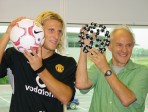 00:29:00
00:29:00
Cloning
Why is cloning such hot science? What are the potential benefits? And are there other ways of achieving them? What are stem cells, and why do many scientists say that embryonic cells are required for this work?
More details | Watch now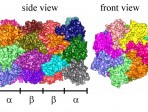 00:52:00
00:52:00
Bioscience and Nanotechnology – peptide assemblies
Toyo University Bio-Nanotechnology Symposium Lectures; Dr Woolfson talks on the self-assembly of peptides.
More details | Watch now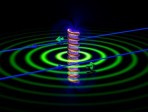 00:55:00
00:55:00
The Quantum World abserver by Electron Waves
Dr. Tonomura is a world renowned pioneer and authority in the field of electron holography, for which he has received many national and international recognitions. He is recognized for his contributions in the development of electron holography, the ....
More details | Watch now 00:11:00
00:11:00
A nano-sized gas sensor 1
A short Introduction to the Nano2Hybrid European Research Project. A video profiling a nanotechnology research project supported by a European Materials Research grant aims to produce a tiny gas sensor using nanotubes that have been developed to be s....
More details | Watch now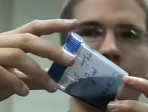 00:11:00
00:11:00
A nano-sized gas sensor 2 – Plasma treating nanotubes
The Namur group are heading up the nano2hybrids project. They are the specialists in plasma treatment of the carbon nanotubes to activate their surfaces, followed by putting down metal nanoparticles under vacuum. These are then sent to Spain to be ma....
More details | Watch now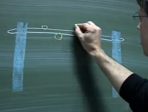 00:10:00
00:10:00
A nano-sized gas sensor 3
The Louvain-la-Neuve group are specialised in theoretical modelling at the atomic scale of the metal nanoparticles on the carbon nanotube surfaces, and in particular how electronic charge passes through the tubes in this case.
More details | Watch now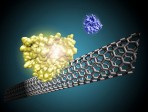 00:07:00
00:07:00
A nano-sized gas sensor 4
The ULB partner in the project are specialised in plasma surface treatment under air, rather than vacuum - it's the next step up in scaling up the plasma treatment of the nanotubes after the Namur group. In the earlier stages of the project they are ....
More details | Watch now 00:02:00
00:02:00
A nano-sized gas sensor 5
The CRPGL group is a newly formed lab in Luxembourg. Within the project their role is to start looking at 'scale up', plasma treatment at larger scales than is possible in the other labs, coupled with a battery of different sample testing techniques.
More details | Watch now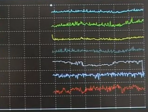 00:14:00
00:14:00
A nano-sized gas sensor 5
Institut des Materiaux, Nantes, France. The IMN group are specialists in computer modelling - in this case, of atomic defects and damage in the surface of the carbon nanotubes caused by the plasma treatment. What is the plasma doing to the nanotube s....
More details | Watch now 00:07:00
00:07:00
A nano-sized gas sensor 5
The Tarragona Group at University Rovira i Virgili are the experts in producing new prototype gas sensors. All the new metal particle treated nanotube samples from Belgium and Luxembourg make their way down to this beautiful corner of Spain, where th....
More details | Watch now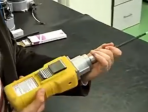 00:07:00
00:07:00
A nano-sized gas sensor 6
Sensotran are the industrial partner in the nano2hybrids project. A small family firm based just outside Barcelona in Spain, they are experts in commercial production of gas sensors for a range of industries, notably for detecting dangerous gases pro....
More details | Watch now 00:40:00
00:40:00
Joseph Rotblat 2
 00:37:00
00:37:00
Joseph Rotblat 1
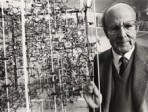 00:52:00
00:52:00
Max Perutz Interview – 2
The concluding part of an interview with the 1962 Nobel Laureate in Chemistry.
More details | Watch now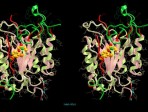 00:16:00
00:16:00
Jacques Monod
 00:08:00
00:08:00
Bucky Balls
The Buckyball, or C-60 molecule was discovered by accident (in the lab) while trying to understand the chemistry between the stars in the Interstellar Medium ISM. The discovery led to the Nobel Prize in chemistry in 1996. Here we look at the structur....
More details | Watch now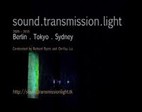 00:05:00
00:05:00
Light Beam
Light is reflected off a flexible shiny surface fixed to the end of a plastic tube. When one speaks into the tubes sound vibrations pass down the tube and make the surface vibrate. The reflected light is therefore sent off from the surface in a con....
More details | Watch now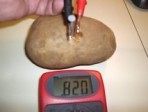 00:07:00
00:07:00
Potato Battery
When two different types of conductors are pushed into a potato chemical reactions take place charging them up - we have a simple electrochemical cell. A potato, zinc screw and carbon rod produce about 1V. We experiment joining a few of these cells u....
More details | Watch now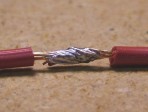 00:02:00
00:02:00
Soldering
This clip is about solder (a low melting point metal mixture) that can be melted using a hand-held soldering iron. The solder also has flux within it to help combat corrosion and produce a good solder joint to the components and circuitry.
More details | Watch now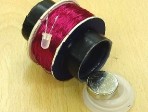 00:04:00
00:04:00
Shake-a-Gen
This is a simple yet effective demonstration of electricity generation. 500 turns of wire are wound onto a 35mm film can and the two ends are attached to an LED light. A strong magnet is placed in the can and the lid fixed back in place. The generato....
More details | Watch now 00:04:00
00:04:00
Seawater Battery
When two different metals are placed in a salt solution (an electrolyte) the chemistry produces a voltage. This is called a cell. By wiring up a number of these cells we can make a battery and use it to power electrical circuits.
More details | Watch now 00:03:00
00:03:00
Three Windmills
Converting wind power into electricity seems like an ideal way of helping to solve our energy problems. However, the power generated by a windmill is dependent on the wind speed. If the wind drops to half its speed there is as little as an 1/8th of t....
More details | Watch now 00:02:00
00:02:00
Parabolic Light Collectors
Parabolic surfaces can be used to concentrate energy for example to focus sunlight to heat things. Using an old World War II spot light mirror we demonstrate how easy it it is to concentrate enough energy to cause combustion. Finally, we show how to ....
More details | Watch now